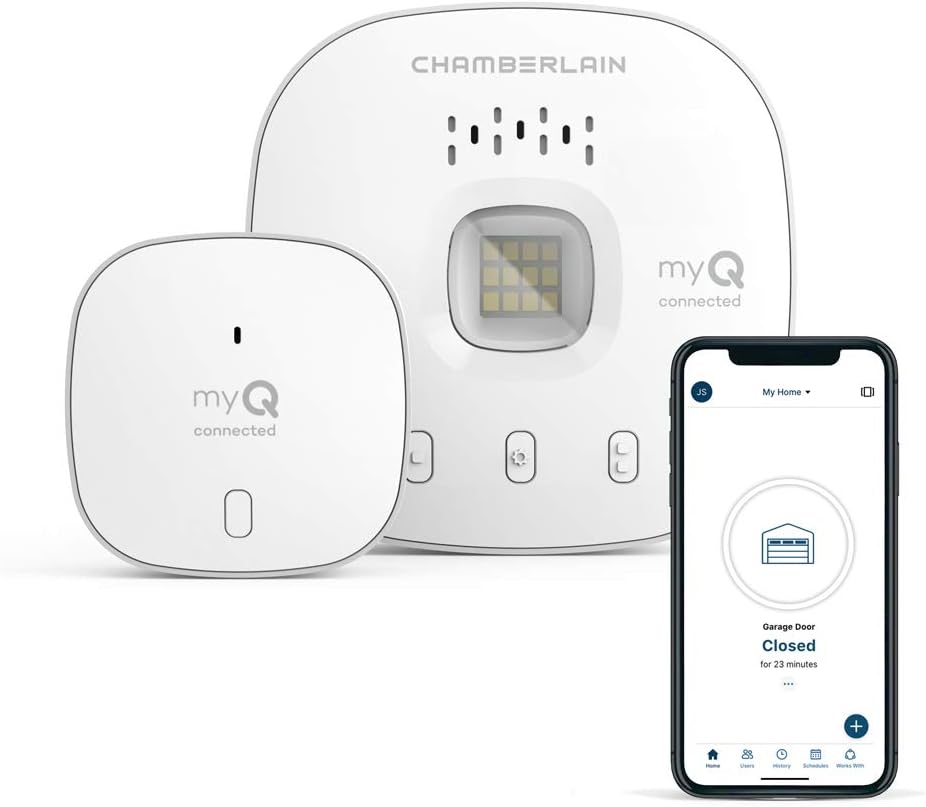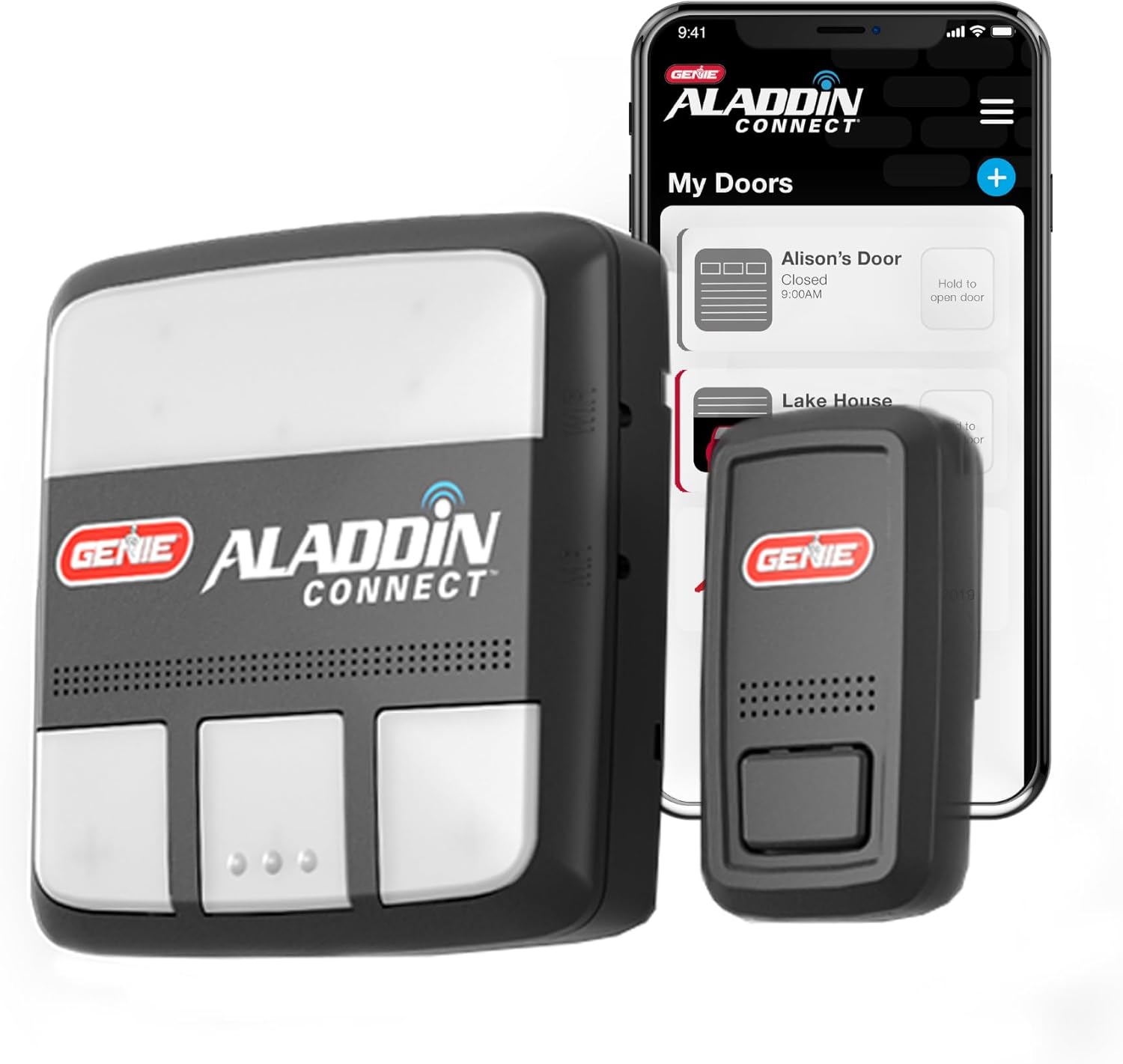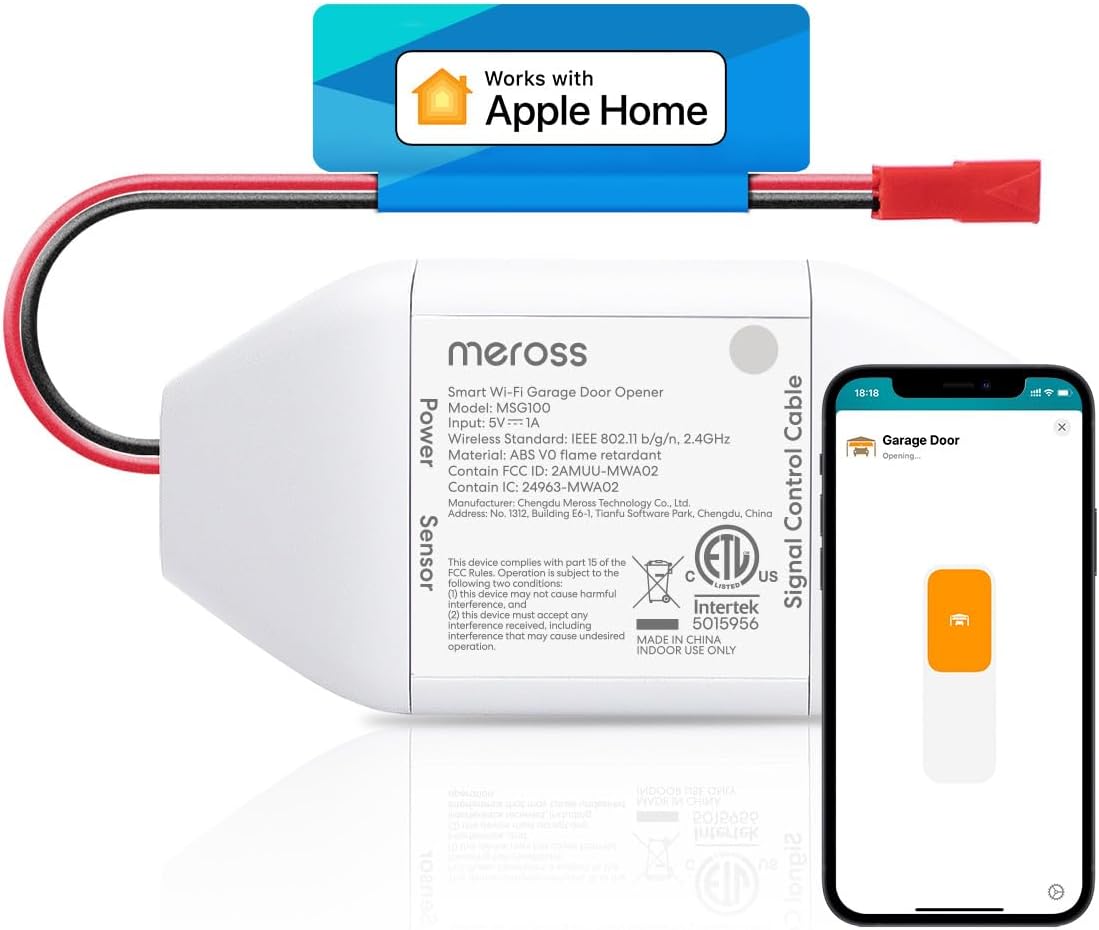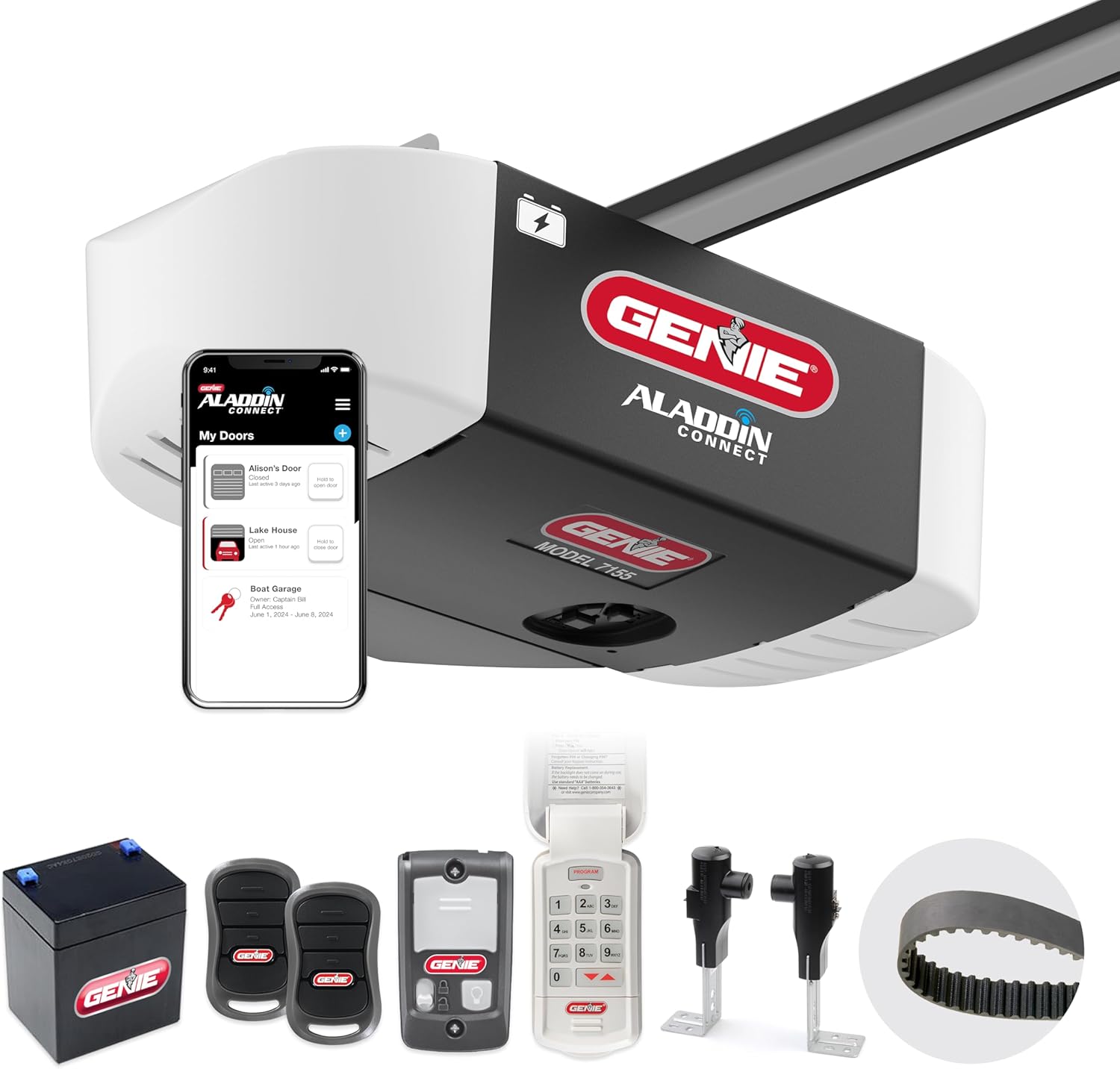In a world rapidly shifting toward automation and smart living, garage doors are getting an intelligent makeover. But what exactly can a smart garage door opener do? And more importantly—is it worth the cost?
A smart garage door opener is more than just a motor that lifts and lowers your garage door. It’s an integrated system that connects to your Wi-Fi and pairs with your smartphone or smart home assistant. This allows you to monitor, control, and automate your garage door from virtually anywhere in the world. From letting in a delivery person while you’re away, to receiving real-time notifications if your garage is left open, the modern garage opener is no longer a background tool—it’s a proactive home security and convenience device.
So, is it just a trendy upgrade, or a practical enhancement to your home? Let’s break it down.
Upgrading to a smart garage door opener isn’t just about keeping up with the latest tech trends—it’s about functionality, security, and making everyday life easier. That said, it’s important to evaluate both the pros and the cons before investing. Below is a detailed breakdown with practical insights:
Use Case: You’re on vacation in another country and suddenly wonder if you closed the garage. With a smart opener, you can check your app and close it remotely if needed.
Value: Peace of mind and control from anywhere in the world.
Get alerts when your garage door opens, closes, or is left open too long.
Example: Know exactly when your kids get home from school—or when someone opens the door in the middle of the night.
Amazon Key Integration allows delivery drivers to safely drop off packages inside your garage.
Benefit: Avoid stolen or rain-damaged packages. Particularly useful for high-traffic delivery households.
Set routines (e.g., close the garage every night at 9 PM), or use geofencing to automatically open or close the door based on your phone’s location.
Why It Matters: No more driving away wondering if you left the garage open.
Grant and revoke digital access to family, friends, guests, or service professionals.
Control: Set access limits—specific days or times—and avoid handing out spare remotes.
Open or close your garage with a simple voice command via Alexa, Google Assistant, or Siri.
Scenario: Hands full with groceries? Just say, “Hey Siri, open the garage.”
Track all garage door activity through a detailed log—know who accessed the garage and when.
Great For: Parents with teens, shared homes, or property rentals.
Smart garage openers typically range from €70–€400, depending on the features and whether it’s a controller add-on or a full opener unit.
Reality Check: While the convenience is worth it for many, it’s still more expensive than a basic unit (~€50–€100).
If your garage is far from the router or your internet frequently drops, smart features can become unreliable.
Fix: A Wi-Fi extender or mesh network often resolves this, but adds to the setup cost.
Being internet-connected means your opener is vulnerable to potential hacking if poorly secured.
Mitigation Tips:
Use strong, unique passwords
Enable two-factor authentication
Choose brands with end-to-end encryption
Though most models are DIY-friendly, setting up integrations with Alexa or Apple HomeKit may require some patience.
Advice: Look for models with intuitive apps and step-by-step video guides if you’re not tech-savvy.
If the power goes out, your opener may not function—unless it has a battery backup.
Solution: Invest in models with built-in backup power systems, especially if you live in an area prone to outages.
Some older or non-standard garage openers may not support smart controllers.
Pro Tip: Check your existing opener’s model number on the smart device’s compatibility list before buying.
| Feature/Concern | Smart Opener Advantage | Potential Drawback |
|---|---|---|
| Remote Control | Operate from anywhere | Requires stable internet |
| Notifications | Real-time alerts & history | Might cause alert fatigue |
| Access Sharing | No need for physical remotes | Possible tech learning curve |
| Price | Adds value and convenience | Higher upfront investment |
| Security | Stronger control & visibility | Privacy risks if not configured securely |
By carefully weighing these benefits and limitations, you can determine whether a smart garage door opener fits your lifestyle and budget. For most homeowners, the added security, control, and convenience far outweigh the drawbacks—especially as prices continue to drop and technology becomes more user-friendly.
For many homeowners, security is the #1 reason to upgrade to a smart garage door opener. After all, the garage is one of the most vulnerable entry points in a home—often connected directly to the interior and housing valuable tools, bikes, or even vehicles.
Modern smart openers offer advanced security features that go far beyond a traditional keypad or remote control. Here’s what to look for—and why it matters.
Smart openers transmit commands (like open/close) and receive status updates over Wi-Fi. Without encryption, these data packets can be intercepted or manipulated.
AES-128 or AES-256 encryption standards (military-grade)
Secure HTTPS communication protocols
Encrypted cloud services for data storage and app communication
Example: Brands like Chamberlain MyQ and Tailwind iQ3 use encrypted channels to ensure data cannot be intercepted or spoofed by hackers.
2FA ensures that even if someone gets your password, they still need a secondary code sent to your phone or email to log in.
Google Authenticator or SMS/email verification options in the app
Mandatory 2FA for administrative settings
Tip: Always enable 2FA in your garage opener’s app settings—especially if you’ve shared access with others or use voice assistants.
One of the most practical safety features is the ability to receive real-time notifications when your garage is opened, closed, or left open too long.
Get alerted if the garage is opened while you’re at work or asleep
Get a reminder if the garage is still open after 10 minutes
Know exactly who triggered the action if multiple users are connected
Bonus: Some apps allow custom alerts for specific users, time windows, or actions.
Granting access is easy—but managing it securely is critical. Smart systems let you:
Create unique accounts or PINs for family members, guests, cleaners, or delivery drivers
Set access limits (e.g., only on weekdays between 2 PM–4 PM)
Revoke access instantly without needing to retrieve remotes or codes
Most systems also keep a detailed activity log showing:
Time of access
Action taken (opened/closed)
User/device used
Ideal For: Families, Airbnbs, or multi-tenant properties where you need to track who’s coming and going.
Some smart garage openers include tamper sensors that trigger alerts if someone tries to force the door open manually. Others allow you to set auto-close timers for additional peace of mind.
Vibration sensors or tilt sensors
Auto-close settings after X minutes of being open
Manual override detection
Example: The Nexx Garage app allows you to set an auto-close timer and get notified if the door doesn’t respond to a command—indicating a potential jam or manual interference.
Some smart openers can connect to garage cameras, floodlights, or smart alarms for even stronger protection. With camera-enabled models, you can:
View live footage of the garage area
Record motion events
Communicate with delivery drivers or visitors via two-way audio
Compatible ecosystems: Ring, Arlo, Nest, and Eufy often integrate seamlessly with smart garage controllers.
Using default or weak passwords – Always change the default login credentials.
Not enabling notifications – You miss out on real-time security awareness.
Sharing your app login instead of creating sub-users – This gives others full control, which can be dangerous.
Skipping firmware updates – These often include critical security patches and improvements.
| Security Feature | Must-Have | Nice-to-Have |
|---|---|---|
| End-to-end encrypted connection | ✅ | |
| Two-factor authentication (2FA) | ✅ | |
| Custom user access and permissions | ✅ | |
| Real-time notifications | ✅ | |
| Auto-close and tamper alerts | ✅ | |
| Camera or alarm system integration | ✅ | |
| Activity log / audit trail | ✅ | |
| Regular firmware updates | ✅ |
A smart garage door opener can act as a digital doorman—monitoring, logging, and defending one of your home’s most overlooked access points. But to make the most of it, you need to choose a model with strong security infrastructure and configure it properly.
If security is a major concern for your home, don’t go for the cheapest model—invest in one with robust encryption, access controls, and real-time monitoring. It’s a small price to pay for long-term peace of mind.
Choosing the right smart garage door opener depends on your needs—whether it’s ease of use, deep integration with your smart home, or security features. Below is a detailed breakdown of some of the top models in 2025, including their strengths, unique features, and ideal user profiles.

Best for: Beginners and Amazon Prime households
Overview:
The Chamberlain MyQ is one of the most widely adopted smart garage solutions. It works as an add-on controller, meaning you don’t have to replace your existing garage door opener (if compatible). The setup is beginner-friendly, and the mobile app is polished and intuitive.
Key Features:
Remote access and control via the MyQ app
Real-time notifications on door status
Supports Amazon Key In-Garage Delivery
Activity logs for tracking open/close history
Optional integration with Google Assistant (via subscription)
Pros:
Compatible with most garage openers made after 1993
Simple DIY installation
Strong app support and user-friendly interface
Perfect for Amazon package delivery inside the garage
Cons:
No native support for Apple HomeKit or direct voice commands without third-party services
Requires a separate hub for smart home integration
Ideal For:
Homeowners looking for an affordable and easy smart upgrade, particularly Amazon Prime users who want secure in-garage deliveries.

Best for: Families and automated routines
Overview:
The Tailwind iQ3 stands out for its intelligent automation and vehicle-sensing technology. It uses a Bluetooth key fob or your smartphone’s Bluetooth/GPS to detect when you’re arriving or leaving—automatically opening or closing the garage.
Key Features:
Precise vehicle presence detection (prevents false triggers)
Full compatibility with Alexa, Google Assistant, and Siri Shortcuts
Auto-close functionality with customizable timers
Access sharing with fine-tuned control
Advanced scheduling and geofencing features
Pros:
Exceptionally reliable geofencing and automation
Supports multiple users and vehicles
Secure access logs and notifications
Great customization options for tech-savvy users
Cons:
Initial setup may be more technical than plug-and-play models
Requires Bluetooth setup for optimal vehicle sensing
Ideal For:
Busy families and power users who want hands-free control, multiple user profiles, and smart automation that works with precision.

Best for: Voice control and multi-user households
Overview:
Nexx Garage offers a flexible, cloud-connected solution that emphasizes ease of voice control and multi-user access. Unlike other systems, Nexx supports native voice commands across all major platforms without extra subscriptions.
Key Features:
Native integration with Alexa, Google Assistant, and Siri
Real-time alerts and activity tracking
Ability to open/close garage by voice or app
Multi-user access with customizable permissions
Works with most garage openers made after 1993
Pros:
Reliable voice control without third-party workarounds
Clean mobile app experience
Great for large households or shared garages
Supports both iOS and Android devices
Cons:
Requires a strong Wi-Fi signal in the garage
No native Amazon Key or camera integrations
Ideal For:
Homeowners who prioritize voice control, live in a smart home environment, and want a solution that’s easy to share with others in the household.

Best for: Apple HomeKit users and value seekers
Overview:
Meross delivers a surprisingly feature-rich experience, with native HomeKit support, making it a favorite for Apple ecosystem users. It’s a compact controller that connects to your existing garage opener and offers direct control via the Home app on iPhone, iPad, and Mac.
Key Features:
Native support for Apple HomeKit, Alexa, and Google Assistant
Simple installation and clean design
Real-time status updates and control via app
Works with most major opener brands
Voice and automation-friendly for Apple users
Pros:
Excellent choice for HomeKit integration
Doesn’t require a separate hub
Good multi-platform support
Easy setup process
Cons:
May require adapter wires for some opener models
Basic app design (not as polished as premium brands)
Ideal For:
Apple users and those looking for a cost-effective way to integrate their garage into a broader smart home system without sacrificing essential features.

Best for: Quiet operation and full-featured built-in system
Overview:
Unlike the other models which are add-ons, the Genie StealthDrive Connect is a complete smart garage door opener with built-in Wi-Fi and smart features. It’s known for its ultra-quiet belt drive system, making it ideal for garages attached to bedrooms or living spaces.
Key Features:
Integrated Wi-Fi with no external hub needed
Compatible with Alexa and Google Assistant
Battery backup for operation during power outages
Quiet belt-drive mechanism with steel reinforcement
Smart app for remote access, scheduling, and monitoring
Pros:
Incredibly quiet and smooth operation
No need to add external smart modules
Battery backup adds reliability
Ideal for new garage door installations
Cons:
Requires full replacement of your opener system
More complex installation process (may require professional help)
Ideal For:
Homeowners who are replacing an existing opener and want an all-in-one, premium solution that balances performance, smart tech, and silent operation.
Before upgrading to a smart garage door opener, it’s essential to ensure that your current setup is compatible, and that you’re ready for a smooth installation process. Whether you’re replacing your existing opener or retrofitting a smart controller, the steps below will help you avoid frustration and maximize performance.
Smart garage openers come in two categories:
Retrofit kits (like MyQ, Meross, Tailwind, Nexx) — attach to your existing opener
Built-in smart openers (like Genie StealthDrive) — complete motor units with smart tech included
Locate the brand and model number of your current garage door opener (usually found on the motor unit itself)
Visit the manufacturer’s website (e.g., MyQ or Meross) and use their compatibility checker
Look for mentions of “Learn” buttons — most systems with a green, yellow, or purple learn button are compatible with retrofit kits
Pro Tip: If your opener was made after 1993, it likely supports safety sensors and will be compatible with most smart controllers.
Most smart garage controllers are plug-and-play and take around 20–30 minutes to install. They usually involve:
Mounting the controller near the opener
Connecting two wires to the opener’s terminals (just like a wall button)
Attaching a door sensor (usually wireless or magnetic)
Connecting to Wi-Fi via the mobile app
Tools Needed:
Screwdriver or drill
Smartphone
Ladder
Wi-Fi password handy!
If you’re replacing the entire garage door opener unit, the job is more involved and may require:
Removing the old motor and rail system
Mounting the new opener
Reconnecting wiring to wall switches and sensors
Programming remotes and smart features
When to hire a pro:
If your garage has unusual mounting brackets, complex wiring, or ceiling height issues
You want a clean, stress-free installation
Most smart garage controllers are plug-and-play and take around 20–30 minutes to install. They usually involve:
Mounting the controller near the opener
Connecting two wires to the opener’s terminals (just like a wall button)
Attaching a door sensor (usually wireless or magnetic)
Connecting to Wi-Fi via the mobile app
Tools Needed:
Screwdriver or drill
Smartphone
Ladder
Wi-Fi password handy!
If you’re replacing the entire garage door opener unit, the job is more involved and may require:
Removing the old motor and rail system
Mounting the new opener
Reconnecting wiring to wall switches and sensors
Programming remotes and smart features
When to hire a pro:
If your garage has unusual mounting brackets, complex wiring, or ceiling height issues
You want a clean, stress-free installation
A strong, stable Wi-Fi connection is non-negotiable for smart garage door openers to function properly.
Stand in your garage and run a speed test on your phone
Look for at least 2 Mbps upload and download speed for reliable app and notification performance
Install a Wi-Fi range extender or mesh Wi-Fi node near the garage
Some brands offer Bluetooth fallback if Wi-Fi is temporarily unavailable (e.g., Tailwind iQ3)
Tip: Mount your smart controller or hub as close to the router-facing side of the garage as possible for better signal.
Most smart controllers require a standard power outlet nearby
Some models offer battery-powered sensors for easy mounting
Look for openers with built-in battery backup if you live in areas with frequent outages
Backup systems allow door operation during a power failure (usually 1–2 full cycles)
Safety Note: Always plug the controller into a grounded outlet, and don’t use extension cords if avoidable.
If you use Apple HomeKit, Alexa, Google Assistant, or another smart home system, check the following:
MyQ: Works with Amazon Key, Google Assistant (premium feature), and IFTTT. No native HomeKit without a bridge.
Meross: Works natively with HomeKit, Alexa, and Google Assistant.
Tailwind: Works with Siri Shortcuts, Alexa, and Google.
Nexx: Works natively with all major platforms.
Enable permissions for location and Bluetooth (required for geofencing or auto-open)
Use voice training on Alexa or Siri for smoother commands
Add garage actions to routines, such as “Open garage when I arrive home”
| Mistake | Why It’s a Problem | How to Fix It |
|---|---|---|
| Installing the door sensor too far from the opener | Can cause connectivity or syncing issues | Follow the mounting distance guide in the manual |
| Skipping Wi-Fi signal check | Leads to unreliable remote access or timeouts | Use a speed test app to check signal strength |
| Using incorrect terminals on opener | Can result in no response or damage | Double-check wiring instructions for your opener model |
| Sharing app login instead of creating user profiles | Creates a security risk | Use built-in access sharing features instead |
| Ignoring firmware updates | Misses security patches and bug fixes | Enable auto-updates or check the app monthly |
So, is a smart garage door opener a convenience or a luxury? After diving deep into the practical benefits, security advantages, leading models, and installation details, the answer is clear:
For most modern households—a smart garage door opener is a practical, valuable upgrade, not just a fancy add-on.
From remotely checking whether you left the garage open, to granting secure access to family or delivery drivers, the daily benefits add up quickly. The peace of mind, enhanced security, and integration with smart home systems make it a worthwhile investment—especially for busy families, frequent travelers, or tech-savvy homeowners.
Even for those who aren’t tech enthusiasts, models like the MyQ or Meross make the transition smooth, affordable, and user-friendly. And with strong security protocols like encryption, 2FA, and activity logs, these systems often provide more protection than traditional remotes or keypads ever could.
That said, it’s not for everyone. If you have unreliable Wi-Fi, live off-grid, or simply don’t use your garage often, it might not offer much extra value. But for most users, especially those embracing smart home convenience, it can be one of the most impactful upgrades you make.
| Cookie | Duration | Description |
|---|---|---|
| cookielawinfo-checbox-analytics | 11 months | This cookie is set by GDPR Cookie Consent plugin. The cookie is used to store the user consent for the cookies in the category "Analytics". |
| cookielawinfo-checbox-functional | 11 months | The cookie is set by GDPR cookie consent to record the user consent for the cookies in the category "Functional". |
| cookielawinfo-checbox-others | 11 months | This cookie is set by GDPR Cookie Consent plugin. The cookie is used to store the user consent for the cookies in the category "Other. |
| cookielawinfo-checkbox-necessary | 11 months | This cookie is set by GDPR Cookie Consent plugin. The cookies is used to store the user consent for the cookies in the category "Necessary". |
| cookielawinfo-checkbox-performance | 11 months | This cookie is set by GDPR Cookie Consent plugin. The cookie is used to store the user consent for the cookies in the category "Performance". |
| viewed_cookie_policy | 11 months | The cookie is set by the GDPR Cookie Consent plugin and is used to store whether or not user has consented to the use of cookies. It does not store any personal data. |